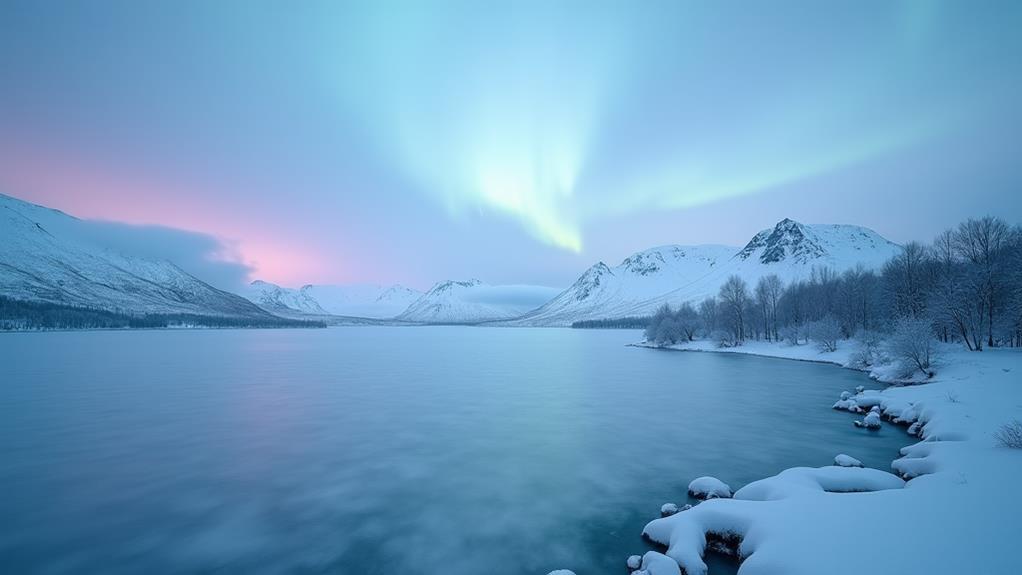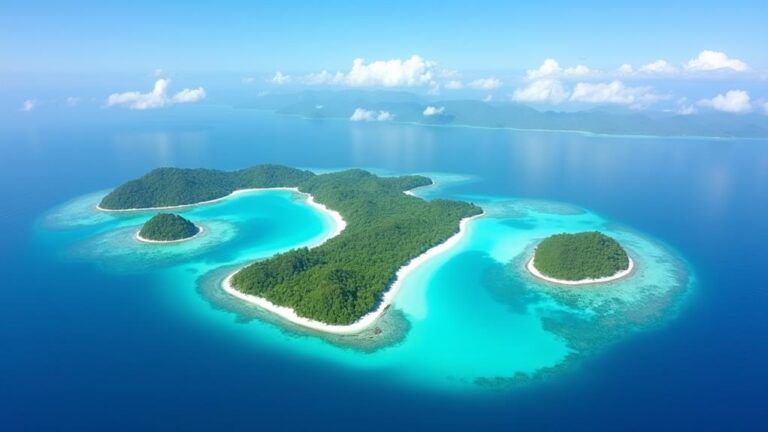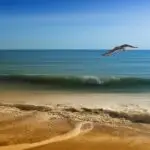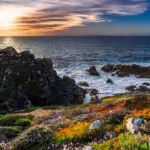When you visit Iceland in March, you'll likely be surprised to learn that the country's winter landscapes are not just frozen and barren, but also teeming with geothermal activity, with many of its famous hot springs and geysers remaining accessible during this time. As you prepare for your trip, you might be wondering what to expect from the unpredictable Icelandic weather, and how the increasing daylight hours will impact your plans. Will the potential for stunning Northern Lights displays be enough to outweigh the challenges of traversing the country's slippery roads and winter conditions?
Contents
Key Takeaways
- Iceland's March weather is characterized by crisp air, icy landscapes, and unpredictable patterns with temperatures ranging from -2°C to 3°C.
- Daylight hours increase in March, with 10-11 hours of sunlight, and the days are still relatively cold with spring precipitation.
- March is a good time to see the Northern Lights due to high solar activity, with displays usually most active around midnight to 3 am.
- Road conditions in March are challenging, with snow, ice, and strong winds making roads slippery, and winter tires are essential for safe driving.
- Popular activities in March include horseback riding, glacier hiking, whale watching, and guided tours, which should be booked with reputable operators.
Weather and Daylight Hours
Greeted by crisp air and icy landscapes, you'll find yourself immersed in Iceland's wintry beauty in March.
This time of year, Iceland is undergoing a shift from winter to spring, bringing unpredictable weather patterns. Be prepared for frosty mornings, with average temperatures ranging from -2°C to 3°C (28°F to 37°F).
Daylight hours are increasing, with approximately 10-11 hours of sunlight, allowing you to make the most of your trip.
March is still a relatively cold month, but you can expect some spring precipitation, including rain and sleet.
This mix of winter and spring weather can lead to slippery roads and sidewalks, making it essential to pack warm, waterproof clothing and sturdy shoes with good grip.
The weather can change rapidly, so it's vital to stay informed about local forecasts and road conditions.
As the days get longer, you'll have more opportunities to explore Iceland's stunning landscapes, including its picturesque villages, waterfalls, and black sand beaches.
Just remember to dress in layers, as the temperature can fluctuate dramatically throughout the day.
Northern Lights in March
| Aurora Forecast | Probability |
|---|---|
| High Activity | 30-50% |
| Medium Activity | 20-30% |
| Low Activity | 10-20% |
| Very Low Activity | 5-10% |
| Unfavorable Conditions | Less than 5% |
March is a great time to see the Northern Lights in Iceland, as the country is approaching the Solar Maximum, a period of high solar activity that occurs every 11 years. This increased activity leads to more frequent and intense displays of the Northern Lights. Check the Aurora Forecast before heading out to maximize your chances of witnessing this natural wonder. Be prepared to stay up late, as the Northern Lights are usually most active around midnight to 3 am.
Road Conditions and Safety
Most of Iceland's roads are still winter conditions in March, making for a challenging drive.
You'll encounter snow, ice, and strong winds that can make roads slippery and narrow. If you plan to rent a car, verify the vehicle is equipped with winter tires. These specially designed tires provide better grip on snowy and icy surfaces, reducing the risk of accidents.
It's also vital to check the vehicle's maintenance before setting out on your journey. Make sure the car is in good condition, with proper tire pressure, functioning brakes, and adequate windshield wipers.
When driving in Iceland's winter conditions, it's imperative to slow down and use caution.
Reduce your speed, especially on rural roads, and leave plenty of space between you and other vehicles. Be aware of your surroundings and watch for signs of avalanches, landslides, or flooding.
Additionally, consider checking the weather forecast before heading out and stay informed about road closures. By taking necessary precautions and being mindful of the road conditions, you can minimize risks and guarantee a safe and enjoyable drive in Iceland.
Always prioritize your safety and the safety of others on the road.
March Activities and Tours
Iceland in March offers a wide range of activities and tours that cater to different interests and preferences, allowing you to experience the country's unique winter landscapes.
You can explore the stunning landscapes on horseback, taking a guided horseback riding tour through the snowy countryside.
This activity provides a unique perspective on the country's breathtaking scenery and allows you to connect with Iceland's majestic horses.
If you're seeking more adventure, consider glacier hiking on Vatnajökull or Mýrdalsjökull glaciers.
Guided tours take you across the icy landscape, offering breathtaking views and an unforgettable experience.
Make sure to choose a reputable tour operator with experienced guides to guarantee a safe and enjoyable experience.
In addition to these activities, March is also a great time for whale watching, as orcas and humpback whales can be spotted in the waters around Iceland.
Many tour operators offer guided boat tours from Reykjavik and Akureyri, providing a unique opportunity to see these incredible creatures in their natural habitat.
Packing for Iceland in March
After experiencing the breathtaking landscapes and unique activities Iceland has to offer in March, it's time to think about what to wear to make the most of your trip.
When packing for Iceland in March, prioritize warmth and waterproofing. Start with a solid base layer, including thermal tops and leggings to keep you warm in freezing temperatures.
Add winter layers, such as fleeces, sweaters, and insulated jackets to trap warmth. A waterproof and breathable outer layer is also essential to shield you from wind, rain, and snow.
Don't forget to include rain gear, like a waterproof jacket and pants, to keep you dry in case of sudden downpours.
Insulated, waterproof boots are also a must-have, as they'll help keep your feet warm and dry in icy conditions. Don't overlook accessories like hats, gloves, and scarves to protect your face and extremities from harsh winds.
With the right clothing, you'll be free to explore Iceland's stunning landscapes without worrying about the cold. Pack smart, and you'll be all set for an adventure of a lifetime in this beautiful winter wonderland.
Frequently Asked Questions
Can I See Puffins in Iceland in March?
You're unlikely to see puffins in March, as they typically return to Iceland in April or May. Puffins spend winter at sea, making bird watching for these charismatic birds challenging during this time.
Are Hot Springs Crowded in March?
Don't assume March is peak season for hot springs – you're actually visiting during the shoulder season. You'll find fewer Spring crowds, making the most of off-peak benefits, like shorter lines and more serene experiences.
Is It Possible to Camp in Iceland in March?
You'll face challenges camping in Iceland in March. Bring warm winter gear to brave harsh conditions. Check campsite availability beforehand, as some may be closed due to weather and maintenance during this time of year.
Can I Drive a Manual Transmission Car in Iceland?
You're trading a relaxing beach drive for a rugged, icy adventure. Can you handle the challenge? In Iceland, you'll face harsh Road Conditions, but if you're comfortable with a Gear Shift, driving a manual transmission car is doable.
Are Credit Cards Widely Accepted in Iceland?
You'll find credit cards widely accepted in Iceland, a largely cashless society. Be aware of credit card limits, as some businesses may have restrictions. Major cards like Visa and Mastercard are commonly accepted everywhere.
Conclusion
You'll face Iceland's harsh winter landscapes in March, but you'll also be rewarded with breathtaking displays of the Northern Lights. Amidst the cold and unpredictable weather, you'll find perfect conditions for witnessing this natural phenomenon. As you navigate the challenging road conditions, remember to prioritize your safety. The thrill of exploring Iceland's winter wonderland is worth braving the elements – just be prepared for the adventure of a lifetime.









